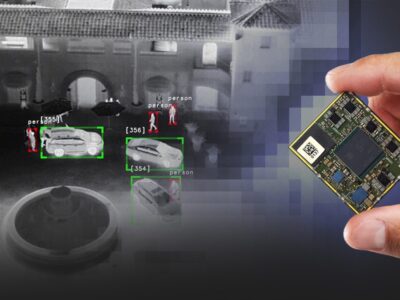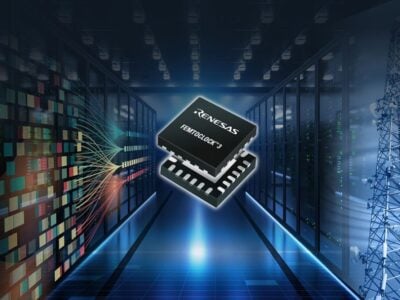
Dedicated battery charger chips for wearables, medical and smart sensors
e-peas has launched a family of battery charger power management (PMIC) chips simplified for energy harvesting applications
While the company’s existing power management ICs (PMICs) offer direct power delivery to the application, as well as the charging of energy storage elements (such as Li-Ion batteries or super-capacitors), the AEM10900, AEM10300 and AEM30300 are designd simply for the charging function.
This allows them to be employed in situations that need a simpler implementation, where there are space or cost constraints that need to be considered. The PMICs are able to achieve zero quiescent current draw from the battery – meaning that if energy harvesting stops for a prolonged period of time, the energy stored into the battery will not be wasted supplying the PMIC.
Working in conjunction with a single-cell photovoltaic panel, the highly-integrated AEM10900 PMIC boost converter is optimized for solar-based energy harvesting in wearable consumer products and body-worn medical monitoring equipment.
The power point tracking (MPPT) functionality specially set for objects in movement, the device is able to ensure that it gets the most energy from the ambient illumination available. The 250mV cold start capability supports charging the battery even when light intensities are very low.
The AEM10900 also introduces an I2C interface to minimize the pin count and to offer a larger set of potential configurations. It has battery thermal protection, a joule counter to let the user know the amount of energy harvested, plus a shipping mode in which the battery cannot be charged.
The AEM10300 and AEM30300 PMICs both have built-in ultra-low power DC-DC converters supporting operation over an input voltage range that covers 100mV to 4.5V. Adaptive energy management permits these devices to automatically switch between boost, buck-boost and buck operational configurations as deemed appropriate. This ensures that optimal energy transfer is always maintained between the respective inputs and the storage element.
All three battery chargers PMIC chips only require three external components. This means that energy harvesting functionality can be added while keeping the bill-of-materials costs low and taking up very little board space.
“As e-peas’ business matures and we continue to gain ever greater commercial traction, we must look to provide a more expansive portfolio of PMIC options to the market,” states Geoffroy Gosset, CEO & co-founder. “Following on from in-depth consultations with our customer base, it became clear that having compact solutions for charging only was going to be of real value. With these newly introduced devices we will now be able to better serve the wearable, healthcare, consumer and industrial sectors, supporting them with technology that fully meets their needs in terms of performance, size and price point.”
The AEM10300 and AEM30300 PMICs are both supplied in a 28-pin QFN package measuring 4 x 4mm, while the AEM10900 is available in either the 28-pin QFN package or a 16-pin WLCSP 2 x 2mm package
Related articles
- Sequans, e-peas team for cellular IoT energy harvesting
- e-peas, Energous team for free space wireless charging
- Airbus leads €8m backing in energy harvesting chip designer
Other articles on eeNews Power
- US restricts silica and polysilicon imports
- Backside power opens up new realms in chip design
- FPGA targets USB interfaces with low power ASSP
- Nissan sues Italian battery maker
- RISC-V AI chip runs on solar power
- UK’s billion pound battery bet should look to solid state cells
- ST inks power deals with Renault, Arrival
 If you enjoyed this article, you will like the following ones: don't miss them by subscribing to :
eeNews on Google News
If you enjoyed this article, you will like the following ones: don't miss them by subscribing to :
eeNews on Google News




